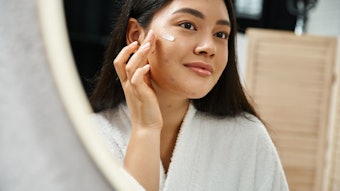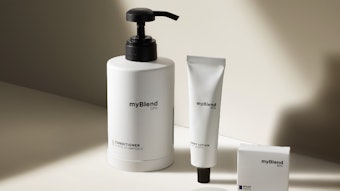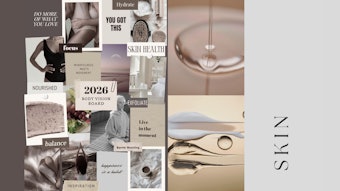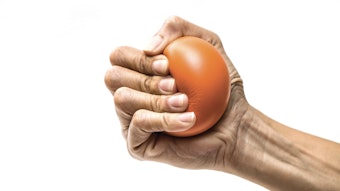The popular belief that good skin is something you're born with isn't entirely true. In fact, experts believe genetics account for only 20% of natural aging, with 80% thought to be from accumulated sun exposure. But for those who would rather steer clear of going under the knife to shave a few years off their appearance, a new arsenal of aesthetic procedures that work without visibly wounding the skin are quickly gaining popularity.
At the American Academy of Dermatology's Summer Academy Meeting 2008 in Chicago, dermatologist Arielle N.B. Kauvar, MD, clinical associate professor of dermatology at New York University School of Medicine in New York, discussed the latest nonsurgical options in skin rejuvenation for treating photodamage and pigmentation problems, wrinkles and textural changes, and loose skin.
Photodamage and pigmentation problems
Aging skin is associated with a range of cosmetic concerns—from pigmentation problems and splotchy skin to redness due to enlarged vessels or capillaries. The development of dry, dull skin also is common, adding to an overall lackluster appearance. Other effects include a loss of collagen, which results in the thinning of the skin, and loss of structural integrity or weakening of the skin.
"As we age, the majority of these skin problems are a direct result of long-term sun exposure," said Kauvar. "Also, the loss and movement of the underlying fat layer of the skin over time causes us to lose volume in our skin, creating that sunken-in look. Fortunately, we now have a number of minimally invasive procedures that can be used either alone or in combination to combat the telltale signs of aging."
Several different types of minimally invasive lasers and light sources can be used to treat pigmentation problems. In general, these technologies work by selectively targeting the affected areas of the skin with varying wavelengths and pulse durations without injuring the top layer of skin. For example, Kauvar noted the KTP, Nd:YAG and Alexandrite lasers work well on areas of the skin affected by noticeable changes in pigmentation, such as sun spots or splotchy skin. Intense pulsed light sources, or IPLs, target both vascular and pigmentation changes on the skin, and the pulsed-dye and pulsed-KTP lasers also are used for vascular conditions.
In addition, peeling techniques, such as microdermabrasion or light chemical peels, are minimally invasive options for removing the accumulated layer of dead skin cells that cause a dull appearance. Kauvar added that these peeling procedures can improve the overall radiance of the skin and also remove some of the abnormal pigmentation from sun damage.
Wrinkles and textural changes
Many of the changes in the skin's texture can be directly attributed to the natural aging cycle and sun damage. Although wrinkles are perhaps the most obvious changes that occur, enlarged pores and even acne scars often worsen as we get older, resulting from the loss of collagen. Plump and smooth-to-the-touch skin, commonly referred to as baby skin, also is replaced by crepe-like skin, which feels dramatically different to the touch.
To treat large pores, Kauvar recommended the use of nonablative lasers to heat the layer of tissue in the superficial dermis, resulting in the production of new, thicker and smoother skin. Often referred to as a "lunchtime procedure," nonablative lasers have minimal side effects that only last for a few hours, primarily redness and puffiness that can be covered by makeup following the procedure.
While nonablative lasers are designed for patients with superficial skin damage who are not expecting dramatic results, fractional nonablative lasers can deliver better results for patients with more extensive signs of aging. Fractional nonablative lasers heat pixilated columns of skin to depths three to four times deeper than traditional nonablative heating, creating increased collagen production that provides improved results in skin texture, fine wrinkles and acne scars. The primary side effect of fractional nonablative lasers is redness that lasts slightly longer than their nonablative counterparts—in most cases, overnight as compared to a few hours.
For patients with even deeper wrinkles and scars, fractional ablative lasers are considered comparable to the traditional ablative lasers, such as the CO2 laser that is considered the gold standard in laser skin resurfacing. With fractional ablative lasers, microscopic plugs of tissue are removed and heated at the same time. Because only 10–40% of the surface area of the skin is treated, Kauvar noted that the procedure requires much less downtime and the risks are lower than with other ablative lasers. "Fractional ablative lasers are a dramatic advance over traditional laser resurfacing," she said.
Even with laser resurfacing, wrinkles that are a result of constant muscle movement—frown lines and crow's feet, for example—can be hard to treat. Kauvar added the popular injectible botulinum toxin, which works by relaxing the muscles that cause wrinkles, works well for these hard-to-treat wrinkles when used in combination with skin resurfacing. For deeper folds and creases, such as vertical lip lines or smile lines, Kauvar suggests hyaluronic acid fillers.
Skin looseness and loss of volume
With the further loss of collagen, the skin loses elasticity and becomes lax. These deeper folds result in jowl formation or what is commonly referred to as chicken neck. Fortunately, there are a variety of options to tighten loose skin.
Monopolar and bipolar radiofrequency, pulse infrared light and infrared lasers all work by deeply heating the skin's tissue, which causes collagen contraction and new collagen production without visibly wounding the skin. These procedures typically require four to six treatment sessions, with side effects limited to redness and swelling that last several hours.
When the skin loses volume from the loss and movement of the subcutaneous fat layer, the result is a drawn appearance with more angular features. To replace volume, a number of proven fillers can be used to plump up the skin. For example, hyaluronic acid fillers last four to 12 months, while polylactic acid and hydroxyapatite are semi-permanent fillers that last from 12 to 18 months. In each case, these filler materials stimulate collagen production, as the material injected into the skin is replaced by the body's own collagen.
"Fillers are an excellent option for softening angular lines, filling the hollows under the eyes and early jowl formation, and correcting deep smile lines," said Kauvar. "A patient with more advanced aging could benefit from a combination of procedures, such as lasers and fillers, to improve the overall appearance of their skin."
Kauvar added that a permanent filler, polymethylmethacrylate (PMMA), is now available in the United States. This filler consists of tiny acrylic plastic beads suspended in collagen that, once placed into the skin, cannot be reversed.
Unlike the hyaluronic acid fillers that can be dissolved at any time with an enzyme that reverses the effects, PMMA cannot be removed. Kauvar cautioned patients to thoroughly discuss their expectations with their dermatologist before considering this irreversible procedure.
"For the average person with mild-to-moderate skin problems, minimally invasive skin rejuvenation offers a range of options to slow down or reverse the aging process," said Kauvar. "Your dermatologist can help you decide what procedures are right for you."
For more information on aging skin, visit www.skincarephysicians.com, a Web site developed by dermatologists that provides patients with up-to-date information on the treatment and management of conditions of the skin, hair and nails.
Headquartered in Schaumburg, IL, the American Academy of Dermatology, founded in 1938, is one of the largest, most influential and most representative of all dermatologic associations. With a membership of more than 15,000 physicians worldwide, the Academy is committed to: advancing the diagnosis and medical, surgical and cosmetic treatment of the
skin, hair and nails; advocating high standards in clinical practice, education, and research in dermatology; and supporting and enhancing patient care for a lifetime of healthier skin, hair and nails. For more information, visit the Academy’s Web site at www.aad.org.










